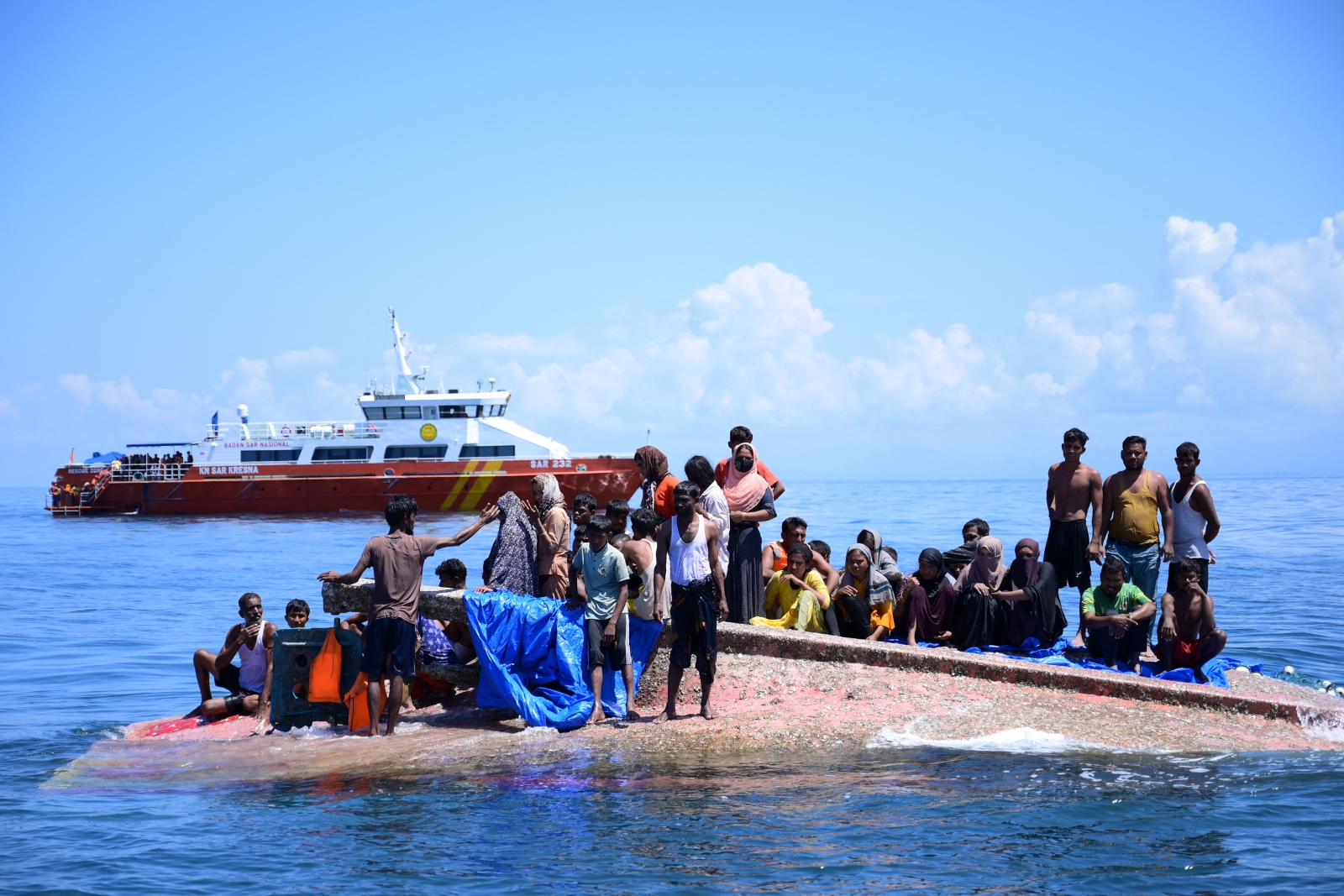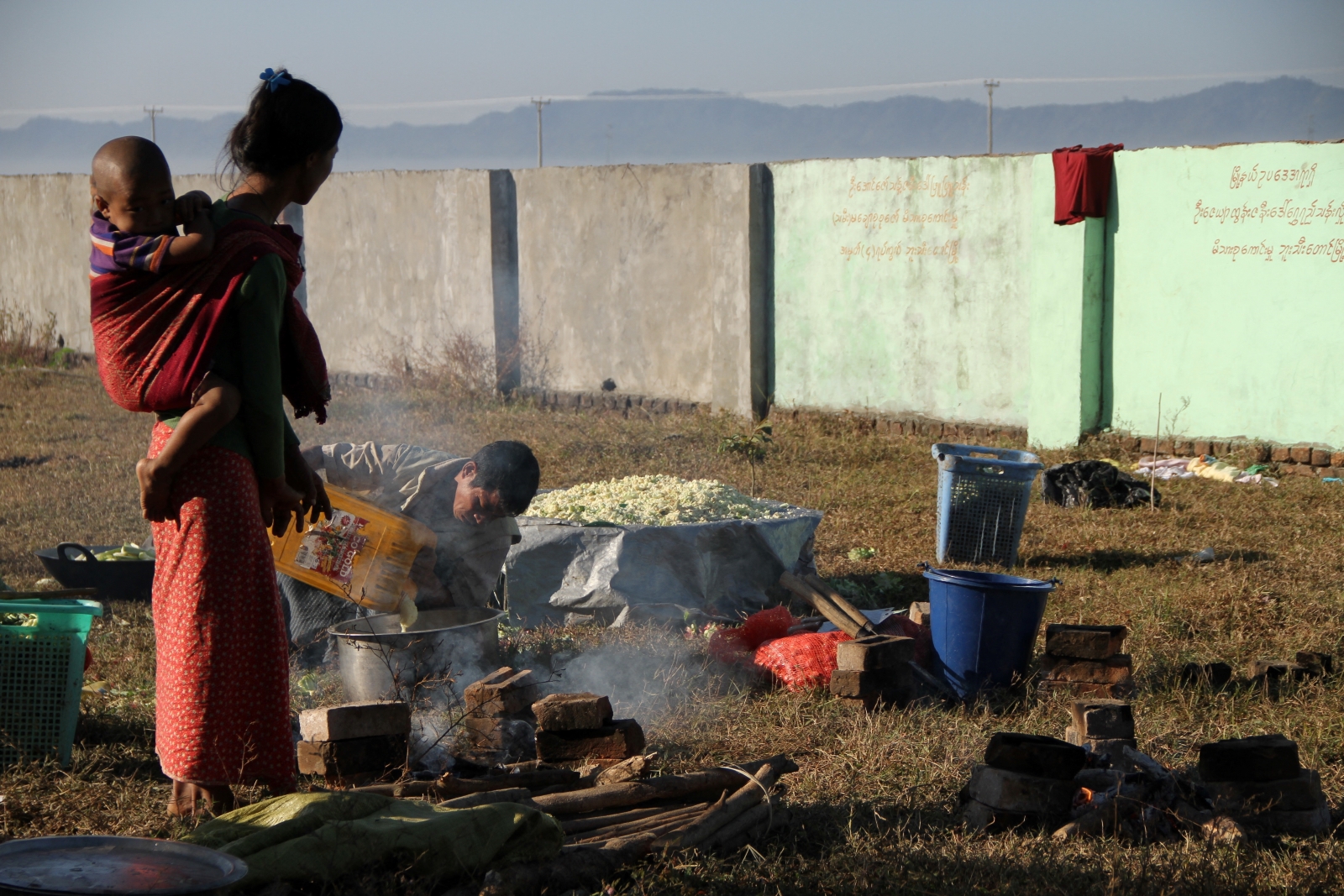It will take years for one of Myanmar’s poorest states to recover from the devastation caused by Cyclone Mocha, a challenge that the business community in Rakhine says is beyond the capacity of the military regime.
By FRONTIER
“My prawn farm was almost completely destroyed and the roof of my house was blown off. I’m going to have to borrow money for all these repairs,” said Ko Maung Maung.
Maung Maung is one of about 140,000 Rohingya Muslims who have been displaced since communal riots hit Rakhine State in 2012. After being forced from his home in the state capital Sittwe, he has slowly rebuilt his life as a small business owner. But when Cyclone Mocha made landfall in Rakhine on May 14, the storm wiped out most of his gains.
He told Frontier that he and his nine partners will need about K10 million (US$4,800) to make the necessary repairs to get their business back on track, a formidable sum for them after having spent about K3 million on irrigation in April.
They also expect that the yields will be lower this year because the repairs will delay the shrimp and prawn harvest, which usually happens in August. In a good year, the farm makes a profit of about K60 million, a figure that seems out of reach after Mocha.
Moreover, the destruction has also driven up the costs of recruiting workers and hiring machines. Maung Maung said a skilled carpenter is now asking for K50,000 ($24) a day, nearly double the pre-storm rate.
Maung Maung and his partners are not alone in seeing their livelihoods on the brink. Although the Rohingya have been hit the hardest, farming and fishing communities and small business owners of all ethnicities are counting the enormous economic cost of the disaster in a state already battered by years of neglect, war and inter-communal strife.
According to the United Nations Development Programme, the cyclone affected 1.9 million people in Rakhine, more than half the state’s population, and flooded more than 1,182 square kilometres of land, while also causing damage in several other states and regions.
Ko Thar Chay*, a Rakhine Buddhist, lost his home in the storm. It is a fate he shares with about half of the 500 households in Tha Yet Taw village, in Ngapi Kyu island, a few kilometres north of Sittwe. His father’s 20-acre shrimp farm was seriously damaged too.
“For the moment I don’t know how we’ll manage to live,” he told Frontier.
Immediately after the cyclone, the strongest in Myanmar since Nargis devastated the Ayeyarwady delta in 2008, the UN World Food Programme estimated that some 800,000 people were “in urgent need of emergency food assistance”. But more than a month later, the junta still refuses to grant access to international aid organisations.
With access severely limited, estimates of the damage have varied wildly. The United League of Arakan, the political wing of the Arakan Army, has claimed that a total of 216,681 houses were destroyed or damaged by the cyclone, while a UN humanitarian update on June 15 said that about 149,000 shelters were damaged or destroyed in Rakhine, out of 158,000 nationally.
The storm has also wrecked rice and seed stores, paddy fields, fish and prawn farms, boats and fishing nets, and infrastructure like warehouses and workshops.
The true death toll is also unknown, with the military junta reporting 145 deaths and the National Unity Government, the parallel authority established by elected representatives ousted in the 2021 coup, claiming that more than 400 have perished.

The ‘pillars of the Rakhine economy’ tumble
Some businesspeople in Rakhine told Frontier they believe the local economy could take up to a decade to recover fully from Cyclone Mocha.
Among them is U Khin Maung Gyi, chair of Rakhine State Entrepreneurs Association, who also warned of inadequate harvests in the near term.
“The monsoon will come soon. The authorities must do something for agriculture, like loans for farmers. If farmers don’t get aid in time, then production will fall and food security will be affected,” he said.
In many villages hit by Mocha, all cattle have been wiped out, and farmers have also lost stores of dung used as fertiliser.
For now, labourers are not short of cleaning and repair jobs, for a day wage of up to K20,000, but Khin Maung Gyi said they will be jobless after a few months. Many of them have lost their homes and are sheltering in monasteries and schools, depending on food donations.
Businesses are having a hard time getting back on their feet, too. Ko Soe Maung*, a Sittwe-based trader sending goods to neighbouring Bangladesh, said the roofs of two of his warehouses were blown off, damaging all the goods stored inside.
“My losses are over K200 million. I need to re-roof at least one warehouse to resume business. I can’t afford to fix both. The costs of timber and metal sheeting are too high now,” he said.
“This is the most powerful storm I’ve ever experienced,” said U Tin Aung Oo, chair of the Rakhine State Chamber of Commerce and Industry. “The damage to one warehouse alone was between K200 and K250 million. And the loss of the goods in there, including some facilities owned by the entrepreneurs’ association, come to about K60 million,” he said.
He also cited an engineering group that had reported damage of about K250 million to a shopping mall construction project.
Most warehouses and rice mills along the main Strand Road in Sittwe have been damaged, and Tin Aung Oo said even though most businesses had insured their warehouses, they were not covered for natural disasters.
To make things worse, Soe Maung said the cost of transporting goods and materials to Rakhine have “doubled” because of the damage to roads and infrastructure.
“The pillars of the Rakhine economy, such as agriculture, fish and shrimp farming and [marine] fishing, have been wiped out,” Khin Maung Gyi said, adding that economic relief programmes should prioritise rice farming and the next paddy season.
Border trade takes another blow
The cyclone has also depressed trade with Bangladesh, which is dominated by fish and other seafood and was already in decline after the junta set new currency control policies in April last year, forcing exporters to convert their foreign exchange holdings into kyat.
Soe Maung, the Sittwe-based trader, said demand from Bangladesh for fisheries products had fallen further in March this year, as a consequence of import restrictions imposed by the Central Bank of Bangladesh.
Official figures show a sharp fall in border trade with Bangladesh from $748 million in the 2019-2020 financial year to $123 million in 2022-23.
International investors had already lost confidence in Rakhine because of intercommunal violence, Khin Maung Gyi said, referring to the riots in 2012 and a Myanmar military offensive in 2017 that drove hundreds of thousands of Rohingya across the border into Bangladesh.
But despite the impact of the cyclone and Rakhine’s longer-term problems, Rakhine chamber of commerce chair Tin Aung Oo believed that Rakhine could recover quickly, within two or three years, if only the regime were willing to work together with domestic and foreign NGOs. “Otherwise, it will take at least five years,” he said.
The junta’s current blocking of international aid holds out little hope for future cooperation, however, and in the months and years ahead, many communities will likely have to struggle on their own.
“It will be tough to get going again,” Tin Aung Oo said, noting that weeks after Mocha landed, some people were still without a roof over their heads.
*indicates a pseudonym for security reasons







